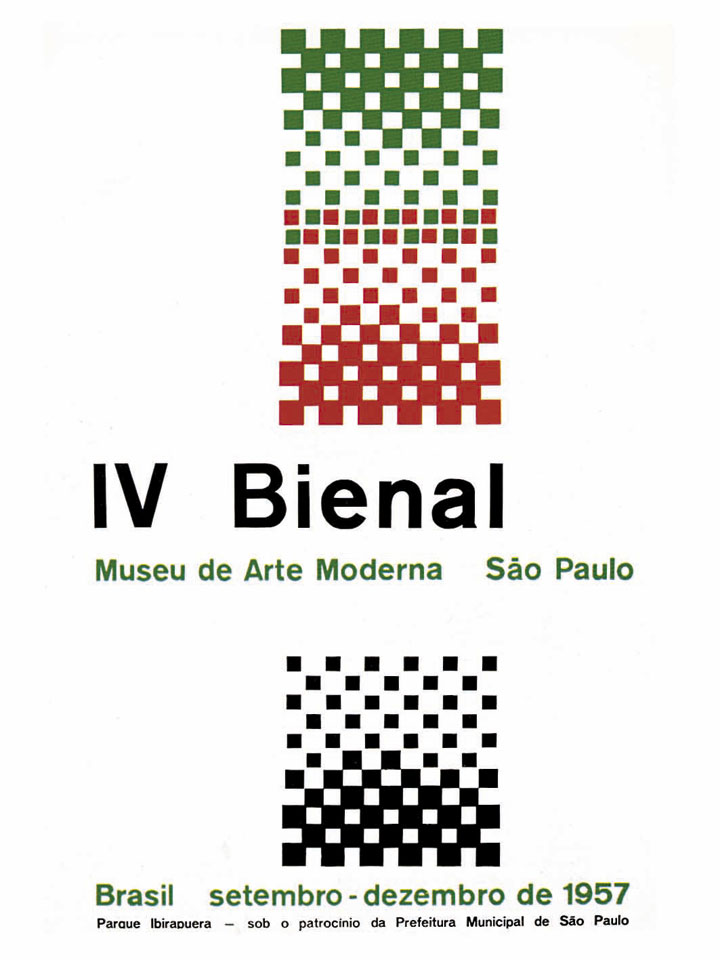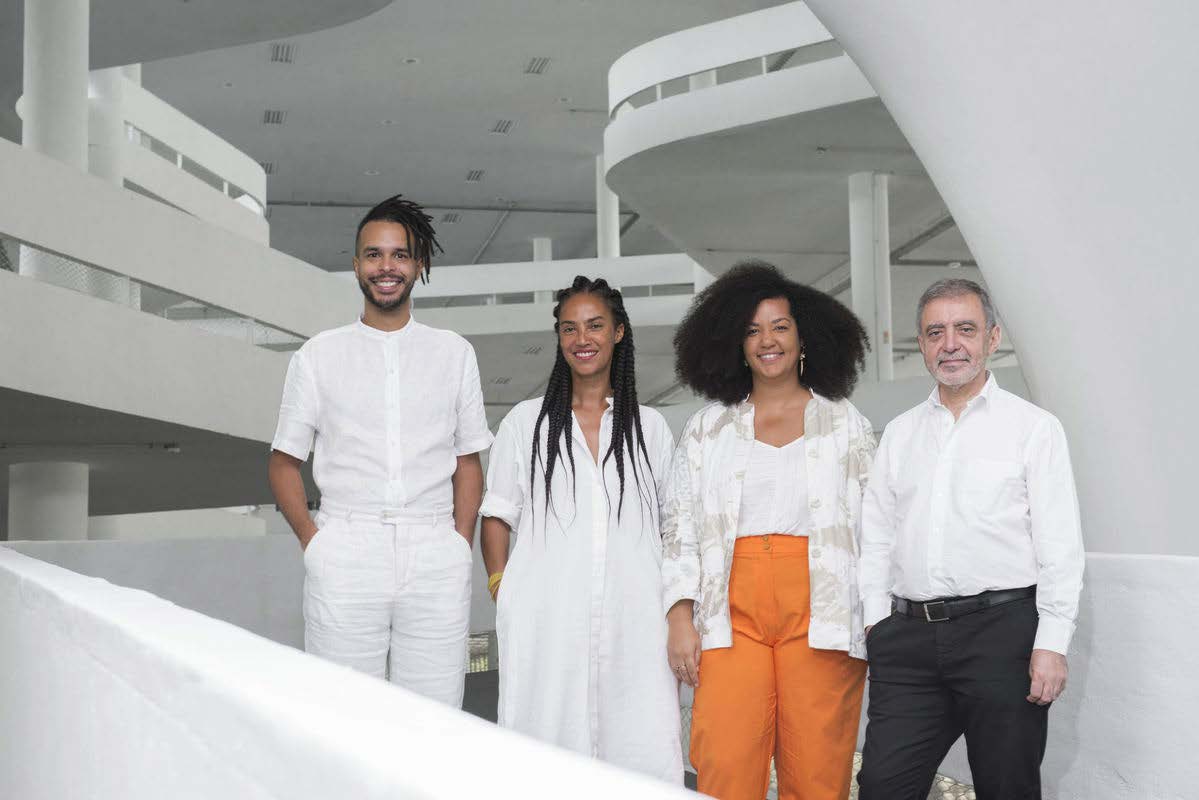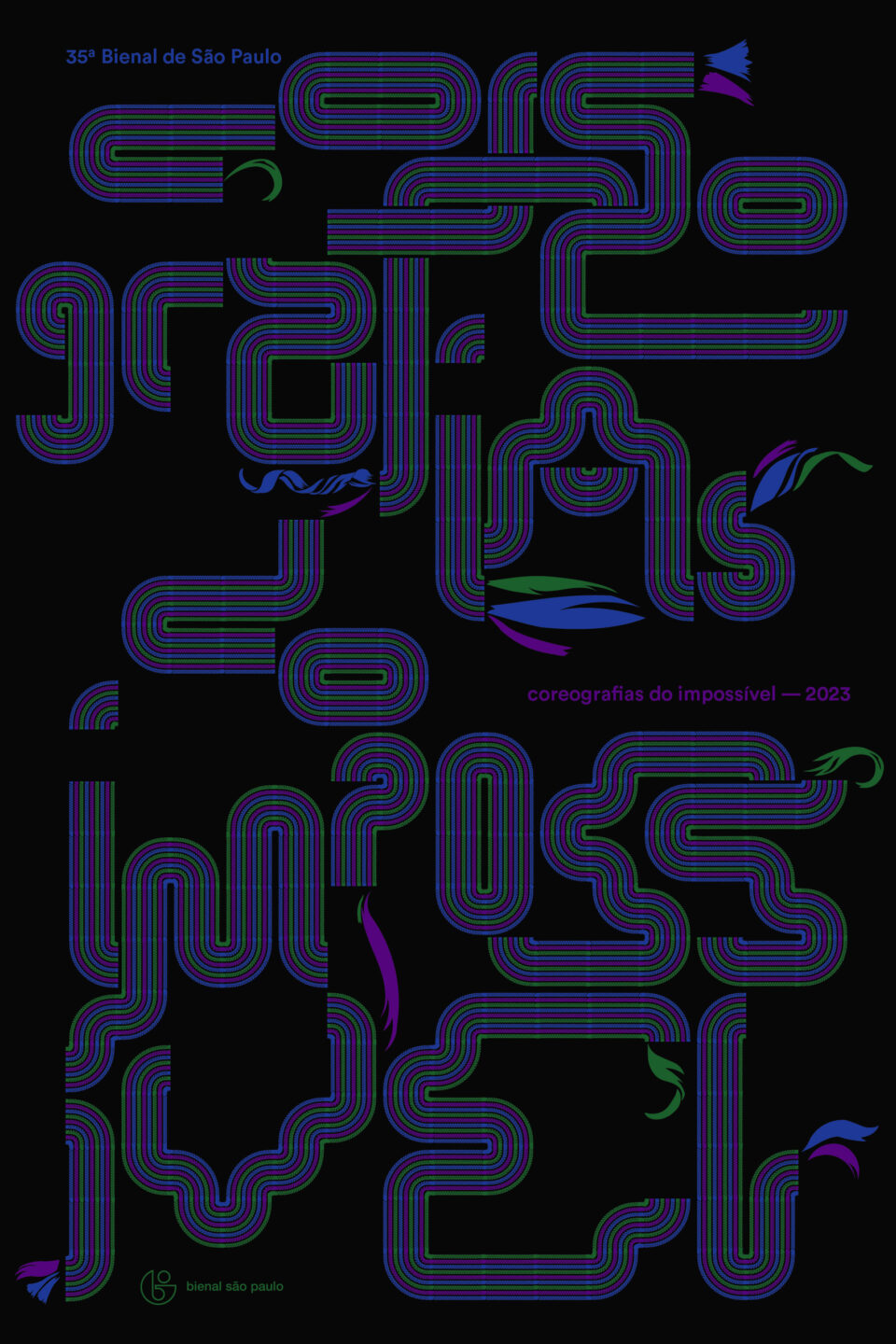Easy Read
![]()
The Fundação Bienal de São Paulo is a private non-profit organization.
It is responsible for organizing the Bienal de São Paulo.
The Bienal is an art exhibition that takes place every two years.
The Fundação Bienal develops various projects.
The Bienal has a permanent team that works to ensure the quality of the projects at all stages.
The Fundação Bienal is also responsible for representing Brazil at the Venice Biennale of both Art and Architecture.
The Fundação also organizes exhibitions with works from the Bienal in other cities in Brazil and in other countries.
The Fundação has a historical archive on modern and contemporary art, which is a benchmark in Latin America.
The archives store and organize books, collections, photographs, newspaper articles, videos or any other document.
The name of the archive is the Arquivo Histórico Wanda Svevo.
The Bienal is an art exhibition that takes place every two years in the city of São Paulo.
The first Bienal took place in 1951.
The Bienal has been running for over 70 years.
The 35th Bienal de São Paulo takes place in 2023.
The Bienal de São Paulo is one of the largest art exhibitions in the world.
The 34th Bienal, which took place in 2021, welcomed more than 700,000 visitors.
The Bienal is an exhibition of contemporary art.
Contemporary art is the art of our time, that is, art made in the last 60 years.
The Bienal’s objectives are:
– To encourage artistic creation;
– To promote debate among society;
– To democratize access to culture.
Educational projects are very important to the Bienal.
The Bienal’s education team develops:
– Mediated visits to exhibitions;
– Teacher training;
– Publications for educators;
– On-site and distance learning courses;
– Lectures and seminars.
The Bienal also encourages artistic creation and the democratization of access to art.
Ciccillo Matarazzo created the Fundação Bienal de São Paulo in 1962.
He was born in São Paulo in 1898 and died in 1977.
Ciccillo was an entrepreneur.
He was very involved in culture.
He took part in very important projects, such as the Teatro Brasileiro da Comédia [Brazilian Comedy Theater], the Companhia de Cinema Vera Cruz [Vera Cruz Film Company], the Cinemateca Brasileira and the Museu de Arte Moderna de São Paulo – MAM.
The name of the Bienal Pavilion is Ciccillo Matarazzo.
This name was chosen to honor Ciccillo Matarazzo, who created the Bienal.
The Bienal is held at the Ciccillo Matarazzo Pavilion in Ibirapuera Park in São Paulo.
The Bienal building was inaugurated in 1954 as part of the celebrations for the 400th anniversary of the city of São Paulo.
The Bienal de São Paulo building was designed by Oscar Niemeyer.
Oscar Niemeyer was a very important Brazilian architect who is recognized all over the world.
He designed the city of Brasilia.
The Bienal Pavilion is a building protected by historical heritage.
The first Bienal to be held in the Ciccillo Matarazzo Pavilion was in 1957.
It was the 4th Bienal. See the poster for the 4th Bienal.

The Bienal building is recognized as a landmark in the history of modern Brazilian architecture.
It is huge and has three floors.
The Bienal building covers an area of 40,000 meters.
It is 250 meters long and 50 meters wide.

The 35th Bienal de São Paulo takes place in 2023.
It begins on September 6 and runs through December 10, 2023.
A curator or group of curators is chosen for each Bienal.
The curators define a different title for each Bienal.
They are responsible for choosing the artists, groups and works of art that will take part in the Bienal.
The 35th Bienal de São Paulo is called choreographies of the impossible.
The 35th Bienal brings together artistic practices from different parts of the world.
The 35th Bienal de São Paulo has four curators.

© Levi Fanan / Fundação Bienal de São Paulo
The team of curators for the 35th Bienal has come up with an interesting proposal that arouses curiosity.
This proposal aims to provoke visitors to the Bienal.
The curators have different experiences that complement each other.
The group of curators works together horizontally.
All the curators are equally important.
She lives between Salvador and São Paulo, in Brazil.
She is a curator, writer and researcher.
She has a master’s degree in Communication and Semiotics from PUC-SP.
She is a member of the curatorial committee of the Museu de Arte Contemporânea da Universidade de São Paulo (MAC-USP).
She was one of the curators of the exhibition Frestas – 3ª Trienal de Artes do Sesc SP and the Festival Internacional da Imagem do Valongo, in Santos, São Paulo.
She lives in Berlin, Germany, but was born in Lisbon, Portugal.
She is an artist, writer and theorist.
She holds a PhD in Philosophy from the Free University of Berlin.
Grada has lectured at universities in several countries.
Her works question knowledge, memory, power and violence.
Her work has been exhibited at the 10th Berlin Biennale, Documenta 14 and the 32nd Bienal de São Paulo.
Grada works with performance, texts, video and installation.
Performance is a type of art in which the artist uses their body or that of others to convey a message.
He lives in São Paulo, Brazil.
He is an anthropologist with a degree from Universidade de São Paulo.
He is an art critic and researcher.
He was curator of contemporary art and literature at the Centro Cultural São Paulo.
Some of his most recent works include the exhibitions Carolina Maria de Jesus: Um Brasil para os brasileiros, at IMS, and Histórias Afro-Atlânticas, at MASP and Instituto Tomie Ohtake.
She lives in Madrid, Spain.
He works in art history.
From 2008 to 2023, he was director of the Museo Reina Sofía in Madrid.
The Reina Sofía is a very important museum.
Manuel has also directed the Antoni Tàpies Foundation and the Museum of Contemporary Art in Barcelona, Spain.
He has written several books on art.

We’re going to try to explain some of the principles of the 35th Bienal in a simple way.
We invite you to imagine and read this text as if you were dancing.
In this text, we’re going to ask you some questions to think about.
The questions don’t need answers.
Imagine that you are rehearsing a choreography!
At first, this dance can be difficult.
You don’t know the steps, you fumble with the rhythm.
You don’t know the music yet.
It seems impossible to learn the choreography.
Little by little, you get to know the choreography better.
You invent ways to learn, to remember when to do a step or stand still.
In a choreography with a group, everyone needs to understand and dance to each other’s rhythm.
Now imagine that the world is a choreography!
Is the world, as it is today, for everyone?
Can everyone take part in the choreography of the world?
Can everyone take part in the Bienal?
Many people who are not familiar with contemporary art may find the Bienal difficult.
We want to say that art and the Bienal are for everyone.
We can all feel, invent and participate in the Bienal.
Everyone is invited to choreograph at the Bienal.
The more people participate, the richer and more diverse the Bienal will be.
Our invitation is for everyone to take part in this dance.
Did you know that the curators choose a title for each Bienal?
The Bienal’s title guides all the exhibition’s actions.
This title inspires the curators to select the artists and works of art that will be in the Bienal.
The curators also write texts, talk to the public and other professionals about the Bienal.
The title of the 35th Bienal is choreographies of the impossible.
Why did the curators choose this name?
What does choreographies of the impossible mean?
We know that there are many ways of dancing.
The curators understand that the work of the Bienal is a rehearsal.
The curators’ work is also a choreography.
The curators want to invite everyone to do this choreography of the impossible.
Choreography is dance, movement, encounter.
Choreography is rhythm, time, sound and silence.
Choreography is thought and questioning.
What do you think and imagine when you hear the expression choreographies of the impossible?
Perhaps some people find it strange to talk about choreography in an art exhibition.
They might ask:
How does a visual arts exhibition choose a title with dance and choreography?
The curators provoke us with the following question:
How can bodies in movement be able to choreograph the possible, within the impossible?
What does the impossible mean?
What is impossible for you?
Impossible is what cannot happen.
Sometimes we feel that some things seem impossible.
But we can invent, do things differently so that they become possible.
Let’s remember some things that seem almost impossible.
How can we live in a world without racism?
How can we live in a society without inequality?
How can we imagine a dance to create a world without injustice?
What movements can we invent to make the world more equal?
The Bienal invites us to think about and invent a possible world for everyone.
The 35th Bienal de São Paulo wants to build multiple possibilities for making these choreographies of the impossible.
The Bienal’s title is an invitation to imagine the unknown.
It’s a provocation to think about impossibilities and possibilities.
The curators use the word choreography to design movements that cross time and space.
The Bienal wants to create new forms, images and possibilities for thinking about the world.
The curators use the word impossible in various ways.
The curators provoke us to think about the impossibilities of today’s world.
Impossible also means the violence that groups suffer.
There is a lot of violence.
There is violence that is immeasurable.
Immeasurable is when you can’t measure it.
What violence is so great and absurd that we can’t measure it?
There is indescribable violence.
Indescribable is when you can’t describe it.
It’s something so difficult that you can’t find the words to say it.
There is unimaginable violence.
Unimaginable is when you can’t imagine it.
Some people and communities experience violence so cruel that we can’t imagine it.
The Bienal also wants to discuss time.
The Bienal believes that there are many ways of experiencing time.
Time is not just clock time.
Time can be understood as movements, as drawings.
Time can be slow or fast.
Time flies, jumps, dances.
Time isn’t a straight line, it’s a spiral.
Children’s time is different from adults’ time.
Time in the forest is different from time in the city.
The Bienal is interested in the different possibilities of experiencing time.
The Bienal wants to talk about creating the possible in a world full of impossibilities.
This is our choreographic design!
A visual identity is created for each edition of the Bienal.
The visual identity is a brand that helps people recognize the 35th Bienal.
The visual identity is aligned with the title of the 35th Bienal.
All communication for the 35th Bienal uses the same visual identity.
The website, social networks and videos all have the same visual identity.
The visual identity of this Bienal is changing.
The logo moves and changes.
Its colors and lines change.
The visual identity was created by the artist Nontsikelelo Mutiti.
Mutiti was born in 1982 in Zimbabwe, a country in Africa.
She is a visual artist and educator.
Mutiti is committed to valuing the culture of black communities from the past, present and future.
The artist was inspired by the straw braids made by Zimbabwean communities and also by the braids in people’s hair.
Mutiti is currently director of graduate studies in graphic design at the Yale School of Art in the United States.
This is the poster Mutiti created for the 35th Bienal de São Paulo:

© Nontsikelelo Mutiti / Fundação Bienal de São Paulo
The 35th Bienal website
The website of the 35th Bienal has a lot of content for the public to read and research.
On the site there is
– Educational project
– Bienal news
– Curatorial and institutional presentation
– List of artists and participants with information about their lives and works
– Agenda with the Bienal program
– Form to schedule mediated tours
– Material in Simple Language/Easy Read
– Information on the Bienal’s accessibility
– Audio guides to better understand the works with descriptions for those who can’t see them
– Publications made for this exhibition
– Photos and videos of the exhibition


 Português
Português